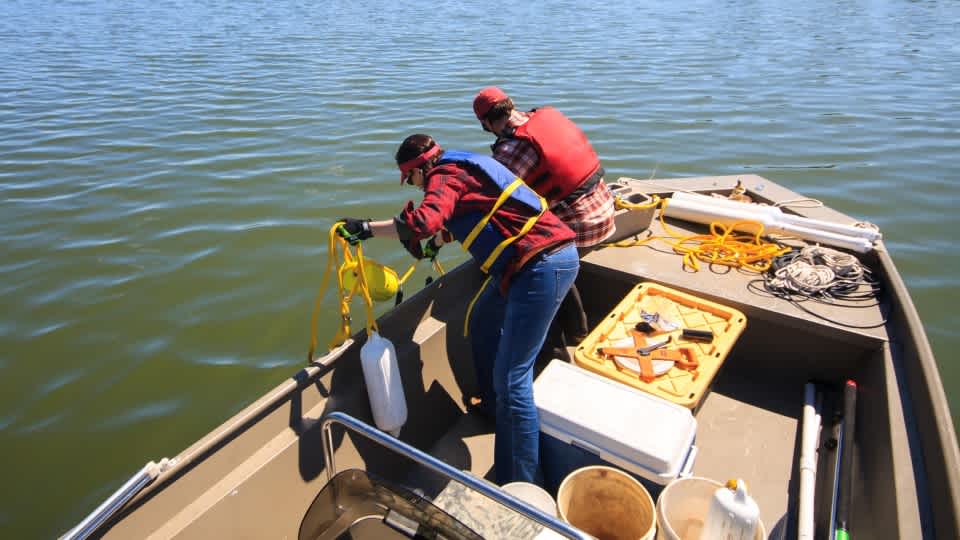
Tracking Harmful Algal Blooms (HABs) in Minnesota Lakes
The duration, frequency, and extent of harmful algal blooms (HABs) are increasing worldwide. New evidence points to similar changes in some Minnesota lakes, yet little information is available on historical trends in blooms or the present-day composition of algae associated with bloom formation and toxin production. Reports of HABs in Minnesota date back more than 100 years, but complaints by citizens and incidents of human and pet exposures to toxins have increased over the last decade.
HABs are generally associated with an overabundance of the toxin-producing group of algae called Cyanobacteria (also referred to as blue-green algae). These blooms significantly reduce the recreational and ecological value of Minnesota lakes by negatively impacting water quality, degrading fisheries, and causing health concerns for humans and domesticated animals. For these reasons, understanding the causes and consequences of HABs is important for both the health of our lakes and the people who visit them. Despite the importance of this issue, there are still major questions about what controls the timing and toxicity of HABs, as well as the risk to more northern lakes, not usually associated with annual algae blooms.
This project, which was funded by the Minnesota Environmental and Natural Resources Trust Fund as recommended by the Legislative-Citizens Commission on Minnesota Resources, seeks to fill in those information gaps as well as provide data to better predict and prevent HABs in the future through three major components of research:
When do HABs occur, in which type of lakes, and which species and toxins are present? Research Station scientists have begun a high-frequency survey of five lakes in southern and central Minnesota that have a history of HABs. In cooperation with the Minnesota Pollution Control Agency, these lakes will be sampled for water chemistry, algae, and algal toxins bi-monthly from May through October of 2016 and 2017.
What are the main environmental factors causing bloom formation and toxin production? Station scientists have deployed submerged sensor strings in all five monitored lakes that will measure temperature and oxygen patterns throughout the year. These sensors will continuously monitor the physical condition of each lake and can be used to investigate what may have triggered a bloom (e.g., warming surface water temperatures, mixing of nutrient-rich bottom waters).
If they are increasing in Minnesota, which lakes are most affected? Sediment cores will be collected from ten lakes, which span all of Minnesota’s major eco-regions, to measure fossil Cyanobacteria pigments over the last 150 years. This will allow scientists to reconstruct the long-term trends in HABs in Minnesota and detect if HABs are becoming more common in Minnesota’s more northern lakes.
The answers to these questions will give us a better understanding of the lake characteristics and nutrient-climate interactions that stimulate HABs and will facilitate new corrective measures and better allocation of management resources. (Staff contact: Adam Heathcote)
